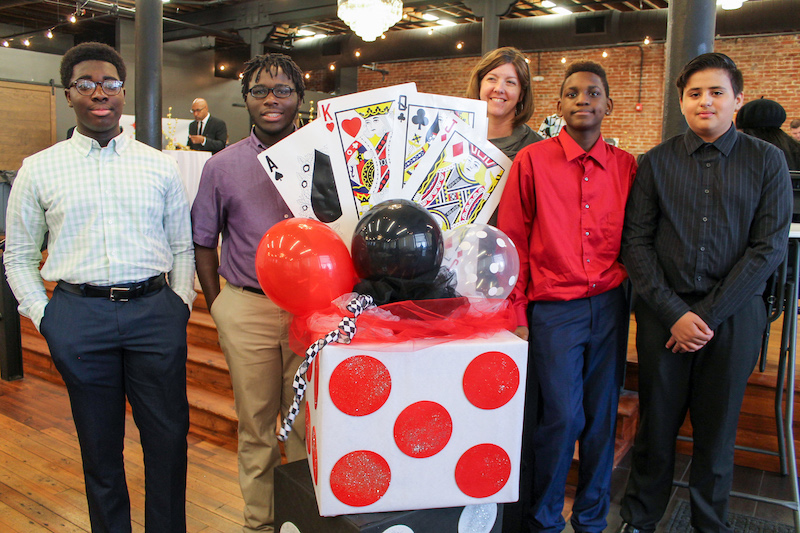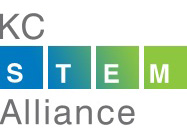18 Oct 2019 Out of this world: The making of a middle school scientific research team
Last fall, four middle school boys each decided to say “yes” to an opportunity shared by their science teacher. Now, after a full year of work outside regular school hours, they’ve earned their bona fides as microgravity researchers and have a new vision for what their future may hold.
The four students met last year when Coronado Middle School science teacher Erin Morley encouraged them to join the Student Spaceflights Experiment Program, a competition aSTEAM Village brought to the Kansas City metro area back in 2012 and continues to manage annually.
With support from GEAR UP, a college readiness program from the University of Kansas, all middle schools in the Kansas City Kansas Public School District fielded teams last year, including the Cosmic Comets. Each team was challenged to write a research proposal for an experiment worthy of being sent to the International Space Station.

Cosmic Comet team members Uhunoma Amayo, DaQuon Cheadle, Carlos Jimenez Reyes and Daleshone Sharkey proposed an experiment to study the effects of microgravity on growing mint with the goal of making life in space more comfortable. When their experiment was selected from among nearly 3,700 proposals, the real work began.
“When we won, it opened the floodgates to what is required: we refined, reviewed, tested, refined again. And we had real world deadlines,” Morley said. The boys pulled together, even meeting over the winter holiday break to handle the crush of details.
That hard work yielded a trip to Washington, D.C., where they presented their project alongside the other winning teams from around the world.
In late July, the team traveled to the Kennedy Space Center to present a poster of their project and to be present for the project’s launch into space. Weather delays kept them from seeing the lift off in person, but didn’t dampen their enthusiasm for continuing their work.
Ground Truth
While their experiment was being run by astronauts aboard the ISS, the team ran a ground truth experiment on Earth to provide accurate comparison data. The experiment returned to Earth in late September and the team came together to study the results, which they shared with the public for the first time during a fundraising event for aSTEAM Village on October 11.
The findings? Microscopic growth occurred in space as well as on Earth. But perhaps their biggest finding was how this experience changed the students themselves.
“Before this experiment, I thought even as hard as I tried that I would never get to college,” DaQuon said, “only because I couldn’t pay for it and my family couldn’t pay for it. I thought I would be in debt all my life, and not be able to support my family. And that had an effect on me. It depressed me. But now, I believe in myself, and believe that I can go to college and can succeed in life.”
Morley says she can’t wait to see what these students decide to do in the future and is encouraging them to explore ways they can put this experience to work no matter which career path they choose.
During aSTEAM Village’s recognition ceremony, the team received plaques from the Unified Government of Wyandotte County in Kansas City, Kansas—and a new title:
“We really shouldn’t call them students,” Morley said. “They have performed research that microgravity researchers have performed, so we are now calling them exactly what they are, which is microgravity researchers.”





